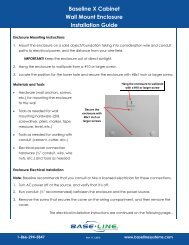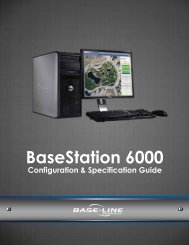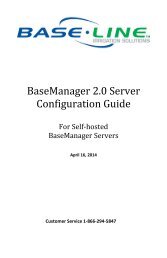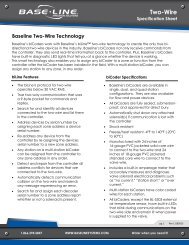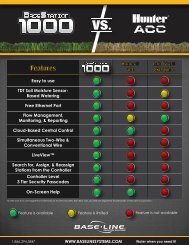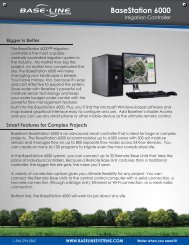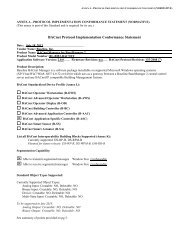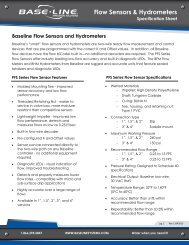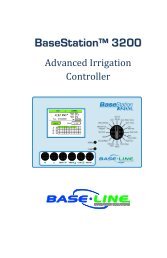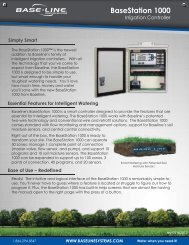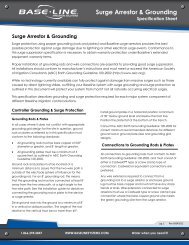Watering with Soil Moisture Sensors - Baseline Systems
Watering with Soil Moisture Sensors - Baseline Systems
Watering with Soil Moisture Sensors - Baseline Systems
Create successful ePaper yourself
Turn your PDF publications into a flip-book with our unique Google optimized e-Paper software.
©2011, <strong>Baseline</strong> Irrigation SolutionsQ When I calibrate a sensor and get a threshold reading, is that threshold fixed?A No. The calibration process gets you close to an accurate threshold, but you are able to finetune it.Q What is the MAD used in the calibration?A The maximum allowed depletion (MAD) is the soil moisture level where you want irrigation tostart. The most common method for calibrating a sensor for the lower moisture level (lowerthreshold) is to let the landscape dry out to the point where irrigation is desired and then usethat moisture level reading as the lower threshold.Q It seems like very few companies are promoting soil moisture sensors. I've been usingcompetitors’ irrigation controllers for years. Why don't they offer soil moisture sensors?A Some of <strong>Baseline</strong>’s competitors offered soil moisture sensors in the past, but their productsdid not turn out to be accurate or durable enough for long-term use in the field.Q What is the life expectancy of <strong>Baseline</strong>’s soil moisture sensor?A <strong>Baseline</strong> has been building soil moisture sensors for over 13 years. Our sensors are used allover the globe — from Death Valley where soil temperatures can be in excess of 100° tonorthern environments <strong>with</strong> multiple freeze/thaw cycles. <strong>Baseline</strong> sensors are expected tolast 25 years in the soil.Q If I can only water one day a week, should I still use a soil moisture sensor?A Yes. If you are under a watering restriction that allows you to water only one day a week, youhave an ideal scenario for using a soil moisture sensor <strong>with</strong> the upper threshold wateringstrategy. Suppose your watering day happens to be on a day after a rainstorm; the soilmoisture sensor will help you conserve even more water by determining just how much wateris needed to bring the soil moisture level to field capacity.Q How do you find a sensor after it has been buried?A If someone buried a sensor and forgot to record its location, it can be challenging to find thesensor later. While it’s best to avoid this problem by always recording the sensor location, youmight be able to find the sensor <strong>with</strong> a wire tracer. You need to know what wire path thesensor is located on. Start at the valve box for that wire path, and follow the signal from thewire tracer to the point where it ends. The soil moisture sensor should be located at thatpoint (no more than 50 feet away from the valve box). Another tip is to look for smallergauge wire in a valve box. Because the sensor wire is a smaller gauge than the other wire inthe valve box, you can use wire size as an indication that a sensor might be connected.<strong>Watering</strong> <strong>with</strong> <strong>Soil</strong> <strong>Moisture</strong> <strong>Sensors</strong>25 | P age



